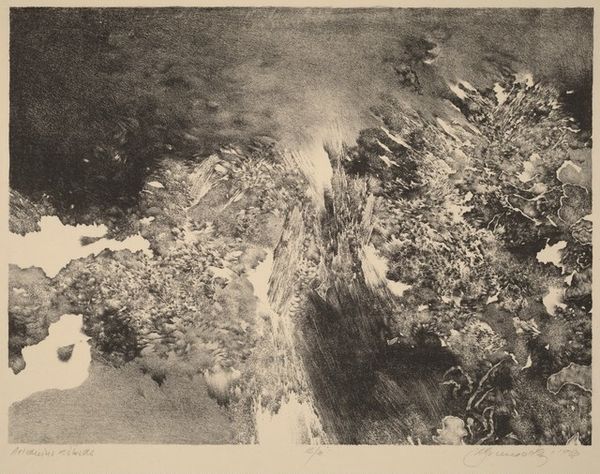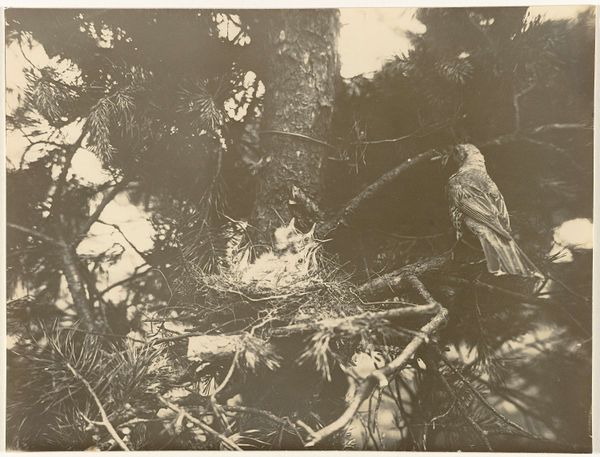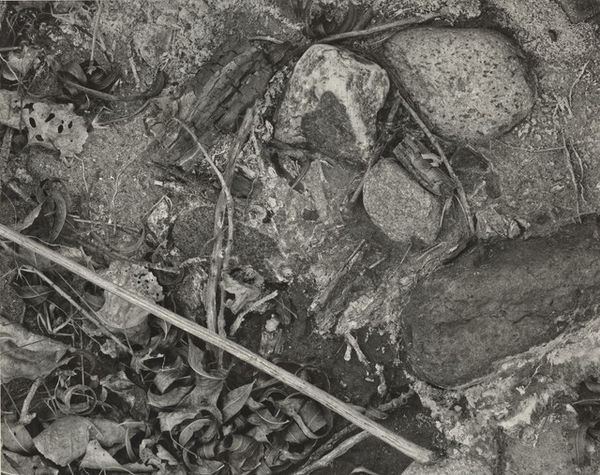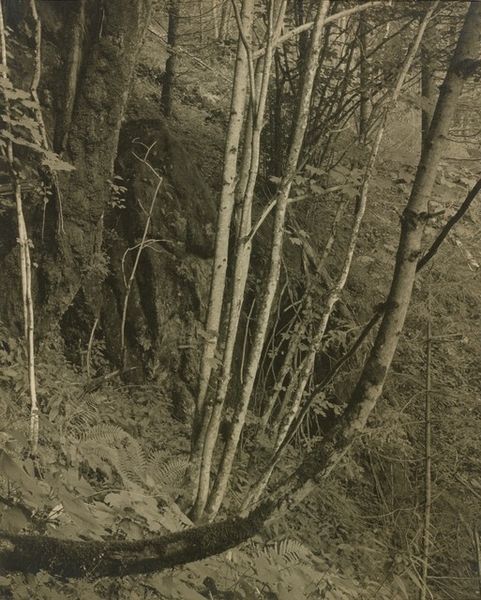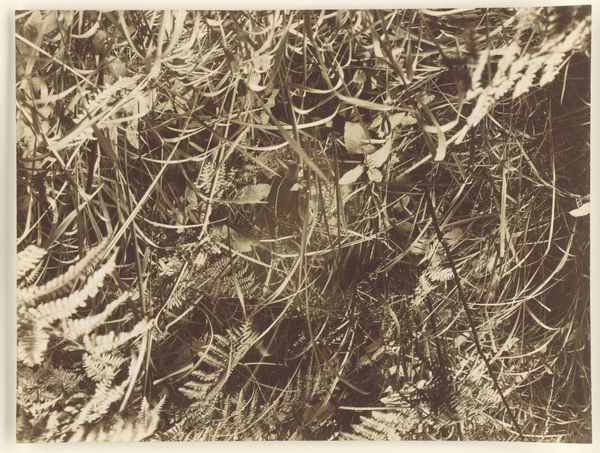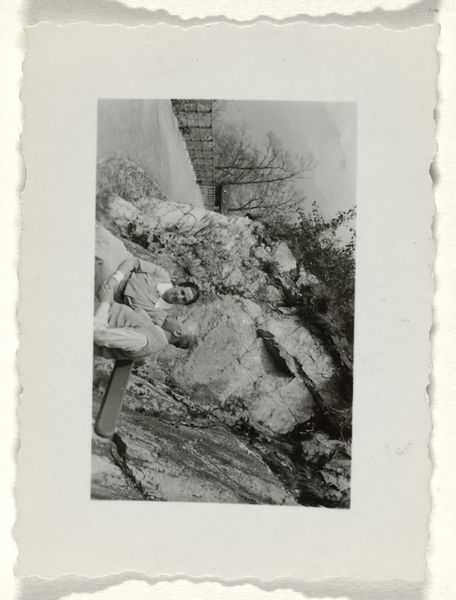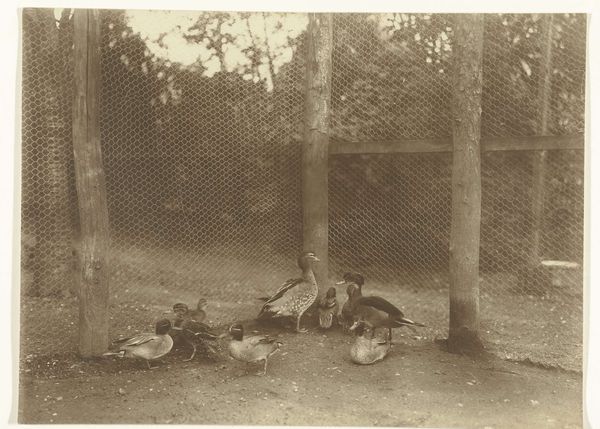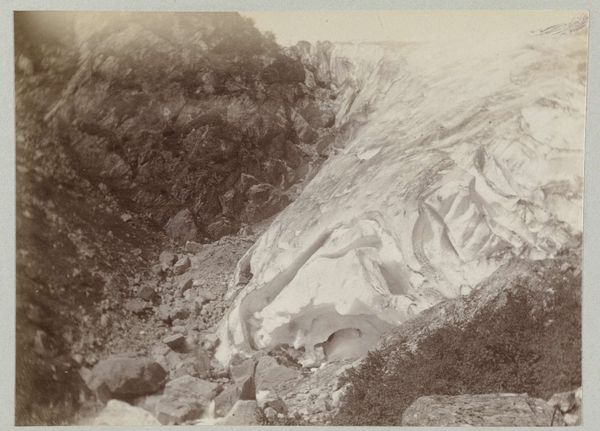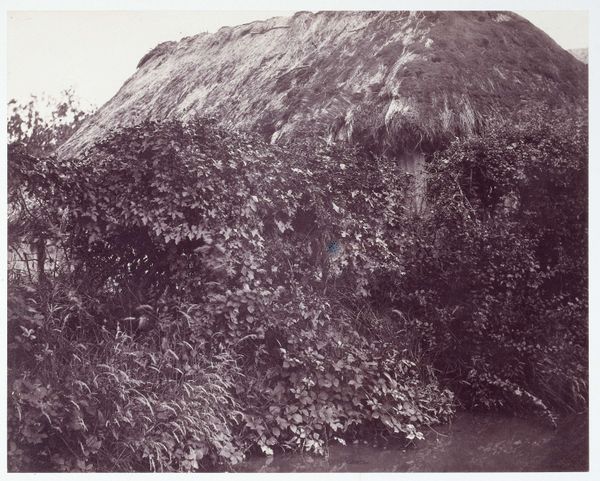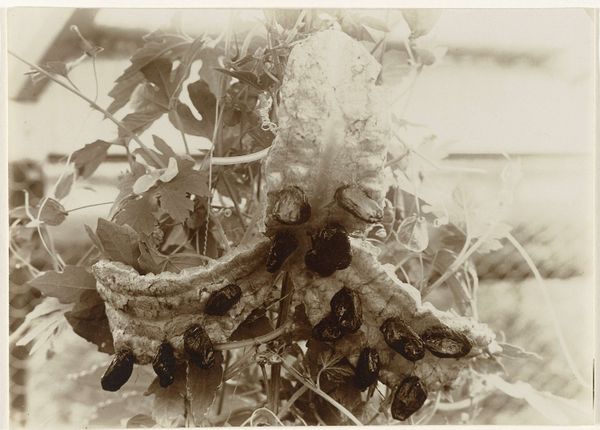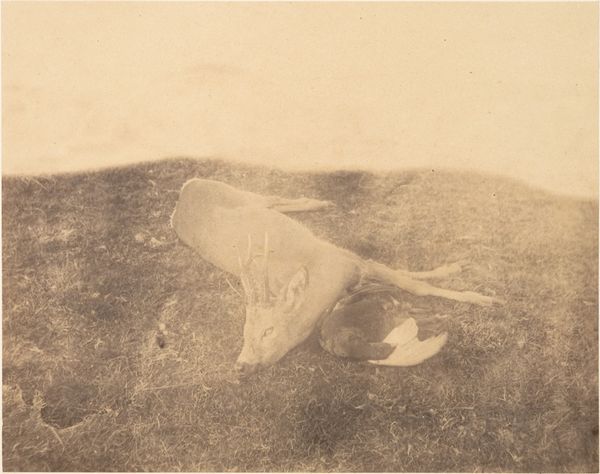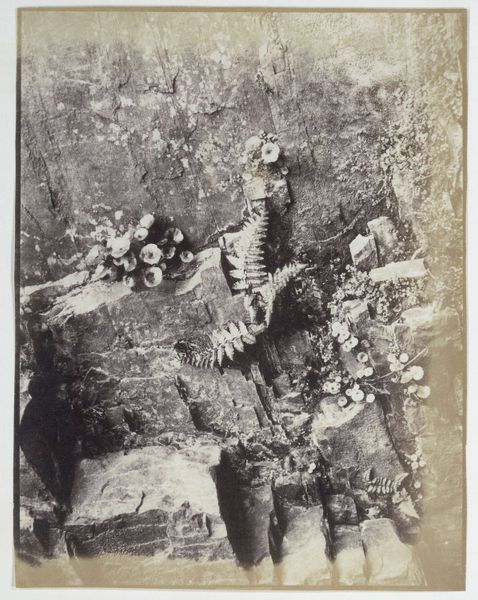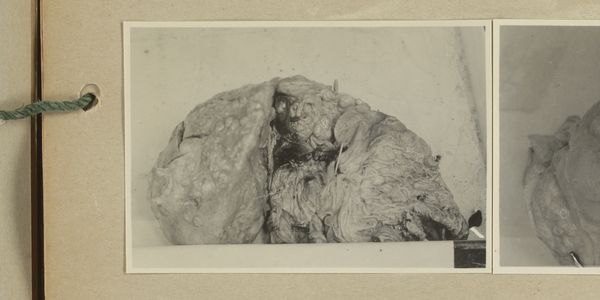
#
toned paper
#
pencil sketch
#
possibly oil pastel
#
fluid art
#
pencil drawing
#
ink drawing experimentation
#
coffee painting
#
underpainting
#
watercolour illustration
#
watercolor
Dimensions: height 118 mm, width 170 mm
Copyright: Rijks Museum: Open Domain
Curator: Up next, we have "Gekraagde roodstaart bij zijn nest (vogels)" a work by Richard Tepe, created sometime between 1900 and 1930. Editor: My initial thought is how earthy the image feels. The tones are very muted, creating an almost dreamlike or aged effect, while also bringing forward notions of landscape and labour, don't you agree? Curator: Yes, that connects well to the time period. The image seems to portray a specific moment in nature, reflective of early 20th-century interests in ornithology and the natural world, increasingly influenced by the rise of scientific inquiry, but framed in a classical composition that nods to earlier landscape traditions. It looks like a toned paper drawing, perhaps a pencil sketch. Editor: I’d add that the sketch reveals so much about the materiality of artmaking; you see every line, every layer. Given that Tepe’s image looks like a careful composition that likely had a particular context in its own moment of making and collecting. Were images of wildlife considered purely documentary or aesthetic then? How would it function in various exhibitionary formats? Curator: Good question. Looking closer at this nest in the picture brings the artifice to the forefront. Is that how the bird would have built their home with found bits of material? The very construction reflects evolving social ideas around naturalism, progress, and preservation at the turn of the century. Photography’s emergence enabled wider circulation and engagement of wildlife representation than ever before. Editor: Exactly, it’s all carefully constructed labor disguised as wilderness and nature! The textured layering gives a great feeling of volume and presence, and how these objects work together within our visual field. You know, in this period photography and printing were becoming more closely intertwined; you see that process of technical advancements mirrored even in something seemingly organic. Curator: That interplay you’re describing, between handcraft, the precision of drawing, and technical reproducibility, encapsulates how artistic values were being negotiated and transformed during this era. It asks questions about what constitutes 'nature', and the human role in shaping that view. Editor: Indeed. All in all, Tepe gives us a layered glimpse, not just of a nest, but into shifting cultural values surrounding labor and nature at the start of the modern age.
Comments
No comments
Be the first to comment and join the conversation on the ultimate creative platform.
